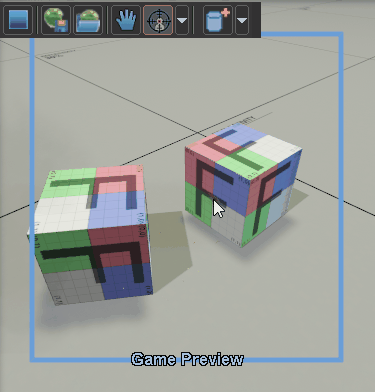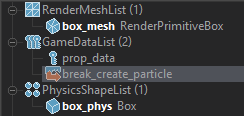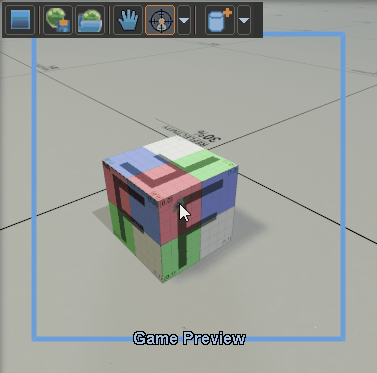Half-Life: Alyx Workshop Tools/Modeling/Advanced Breakable Props
Contents
BreakPiece Options
The BreakPiece node has a variety of options, for example "Random Spawn Chance" can be used to add additional variety to breakages.
Multi-Tier Breakables
BreakPieceEmbedded nodes can be nested within each other, to make the spawned pieces themselves breakable. (Each breakpiece is a separate physics prop, so use this judiciously!)
Break Commands
Break Commands are nodes you add to the parent model's gamedata to trigger additional behavior when the model breaks. For example the break_create_particle command spawns a particle system when the object breaks:
Other commands can apply custom forces, create physics joints, modify materialgroups, or change how damage is done to spawned breakpieces.
BreakPieceSimpleParticles
This is an advanced node that can be used to spawn non-physical and non-interactive mesh particles, which are cheaper to simulate than prop_physics and can be used in larger numbers than normal breakpieces. (But lack the interactivity of normal breakpieces.)
It takes a DMX/FBX file and when the parent model compiles this node will resolve into a helper model with a bodygroup choice for each component, a particle snapshot that positions them in the appropriate places, and a breakcommand that spawns a particlesystem to manage the simulation of the pieces.
BreakPieceExternal
This node references a separate VMDL to spawn as a breakpiece, compared to the BreakPieceEmbedded where the piece is authored inline in the parent model. This is similar to the Source1 breakable workflow, where pieces were manually authored as separate models, and can be used to more share pieces between multiple breakable parent models.



